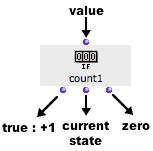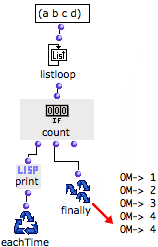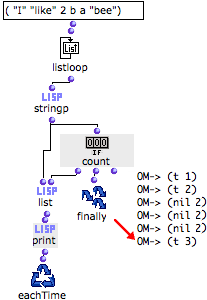Count : Counting Items
![]() Count
is a counter. Its internal value increases at each evaluation evaluated, if the input value is non nil.
Count
is a counter. Its internal value increases at each evaluation evaluated, if the input value is non nil.
Inputs and Outputs
 | Count has one default input and three outputs :
|
Examples
|  |
We will now apply count more specifically, to know how many strings a list contains among other types of items.
 |
|
